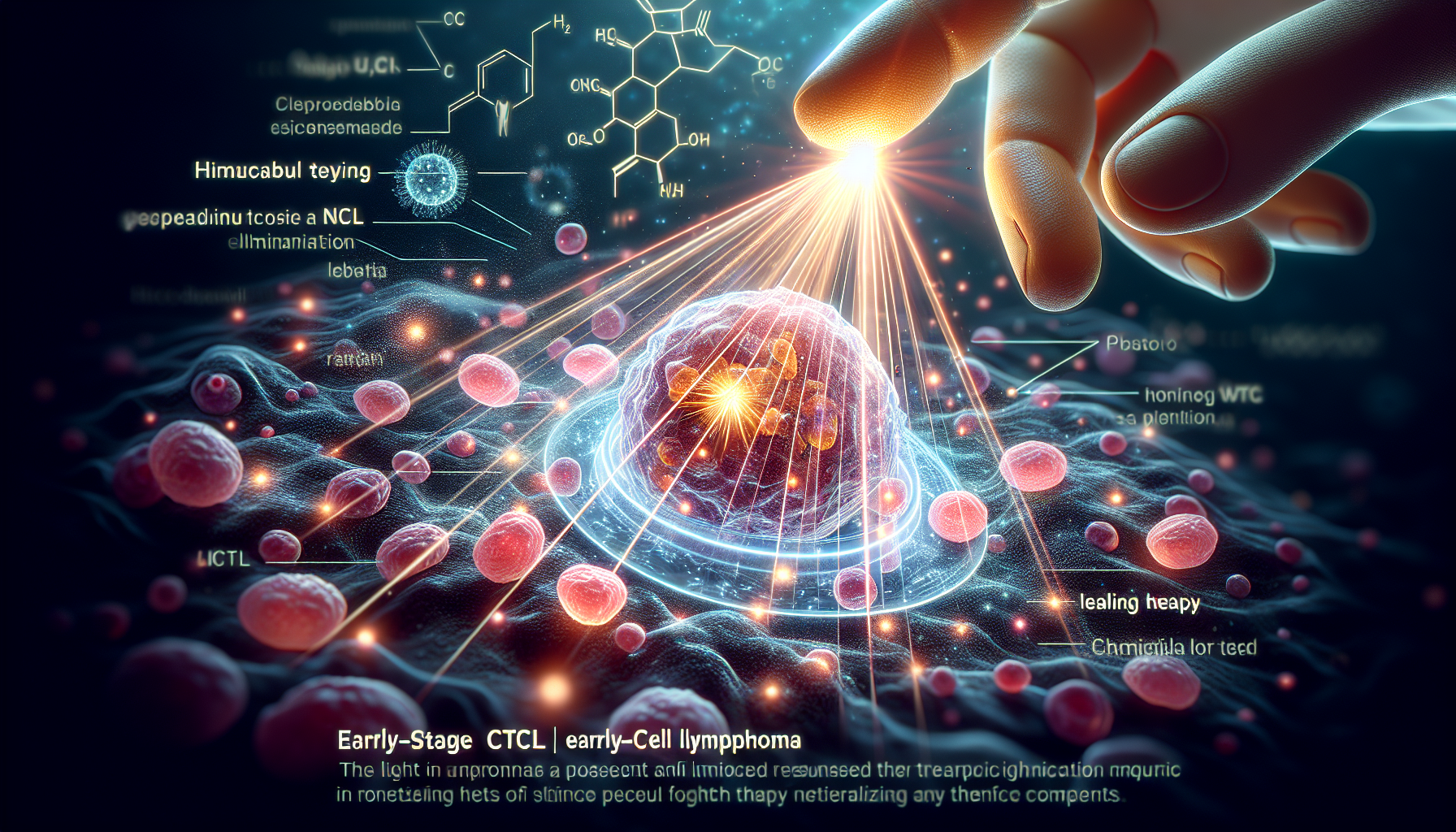HyBryte™ Shows Promising Results Over Valchlor® in Skin Cancer Treatment
Key Takeaways
- HyBryte™ outperforms Valchlor® in treating CTCL.
- HyBryte™ has a favorable safety profile.
- Soligenix is preparing for further trials and potential commercialization of HyBryte™.
Did You Know?
Introduction to Cutaneous T-Cell Lymphoma
Cutaneous T-cell lymphoma (CTCL) is a rare form of non-Hodgkin’s lymphoma that affects the skin. Unlike other lymphomas, which typically involve B-cells, CTCL is caused by the expansion of malignant T-cells, which migrate to and affect the skin. Symptoms range from patches and plaques to tumors, with survival rates varying based on the disease stage.
Comparative Study of HyBryte™ and Valchlor®
HyBryte™ (synthetic hypericin) and Valchlor® (mechlorethamine gel) were recently compared in a clinical study for their effectiveness in treating early-stage CTCL. Conducted by the Rochester Skin Lymphoma Medical Group, the study involved 10 participants, with treatment success defined as a 50% or more reduction in the severity of skin lesions after 12 weeks.
The results were significantly in favor of HyBryte™, with 60% of the patients showing marked improvement compared to 20% of those treated with Valchlor®. Patients treated with HyBryte™ also reported fewer side effects, underscoring its favorable safety profile.
Mechanism and Benefits of HyBryte™
HyBryte™ is a novel photodynamic therapy that leverages safe, visible light for activation. Its active ingredient, synthetic hypericin, is applied to the skin, absorbed by the malignant T-cells, and activated by light 24 hours later. The treatment provides a depth of skin penetration that surpasses ultraviolet-based therapies and avoids the risks associated with DNA-damaging treatments.
Further benefits include its specific action against malignant T-cells and a history of minimal severe side effects, making it a potentially safer option compared to other therapies.
Detailed Study Results
The open-label study at the Rochester Skin Lymphoma Medical Group found that 60% of HyBryte™ patients achieved “Treatment Success,” compared to just 20% in the Valchlor® group. Additionally, those not achieving full success with HyBryte™ still saw substantial improvement in lesion severity.
From a safety perspective, none of the HyBryte™ patients experienced adverse events related to treatment, unlike the Valchlor® group, where 60% reported side effects such as rashes and contact dermatitis.
Implications for HyBryte™ as a Therapy
The promising results align with previous Phase 2 and 3 studies, suggesting that HyBryte™ could be integrated as a primary treatment option for CTCL. Its rapid onset of action and consistency across studies make it a valuable addition whose safety profile is also advantageous.
Future of HyBryte™
Soligenix plans to pursue a second Phase 3 study, named FLASH2, to solidify these findings. The study will extend the treatment period to 18 weeks to better represent real-world conditions. The goal is to establish HyBryte™ as a safe and effective first-line therapy for early-stage CTCL, pending regulatory approvals.
Understanding CTCL
CTCL is unique in its T-cell origin compared to the more common B-cell non-Hodgkin’s lymphomas. This cancer primarily manifests in the skin, causing lesions that can progress from benign patches to malignant tumors. Treatment aims to manage symptoms and control progression, as there is no current cure.
Prevalence of CTCL
CTCL is relatively rare, impacting around 31,000 people in the U.S. and 38,000 in Europe. There are approximately 3,200 new cases annually in the U.S. and 3,800 in Europe.
Future Prospects and Regulatory Approvals
With encouraging results from both the initial study and the prospective FLASH2 trial, Soligenix is preparing for the possibility of commercialization. Achieving regulatory approval from entities like the FDA and EMA would enable wider access to this promising treatment.
About Soligenix
Soligenix is a biopharmaceutical company dedicated to developing therapies for rare diseases, including various forms of cancer and immunological conditions. They focus on both therapeutic and preventive healthcare solutions, showcasing a broad pipeline of innovative treatments.
References
- Soligenix Official Websitehttps://www.soligenix.com
- ClinicalTrials.govhttps://clinicaltrials.gov/ct2/show/NCT02448381
- American Cancer Society - CTCLhttps://www.cancer.org/cancer/cutaneous-t-cell-lymphoma.html
- National Cancer Institutehttps://www.cancer.gov/types/lymphoma/patient/skin-lymphoma-treatment-pdq






